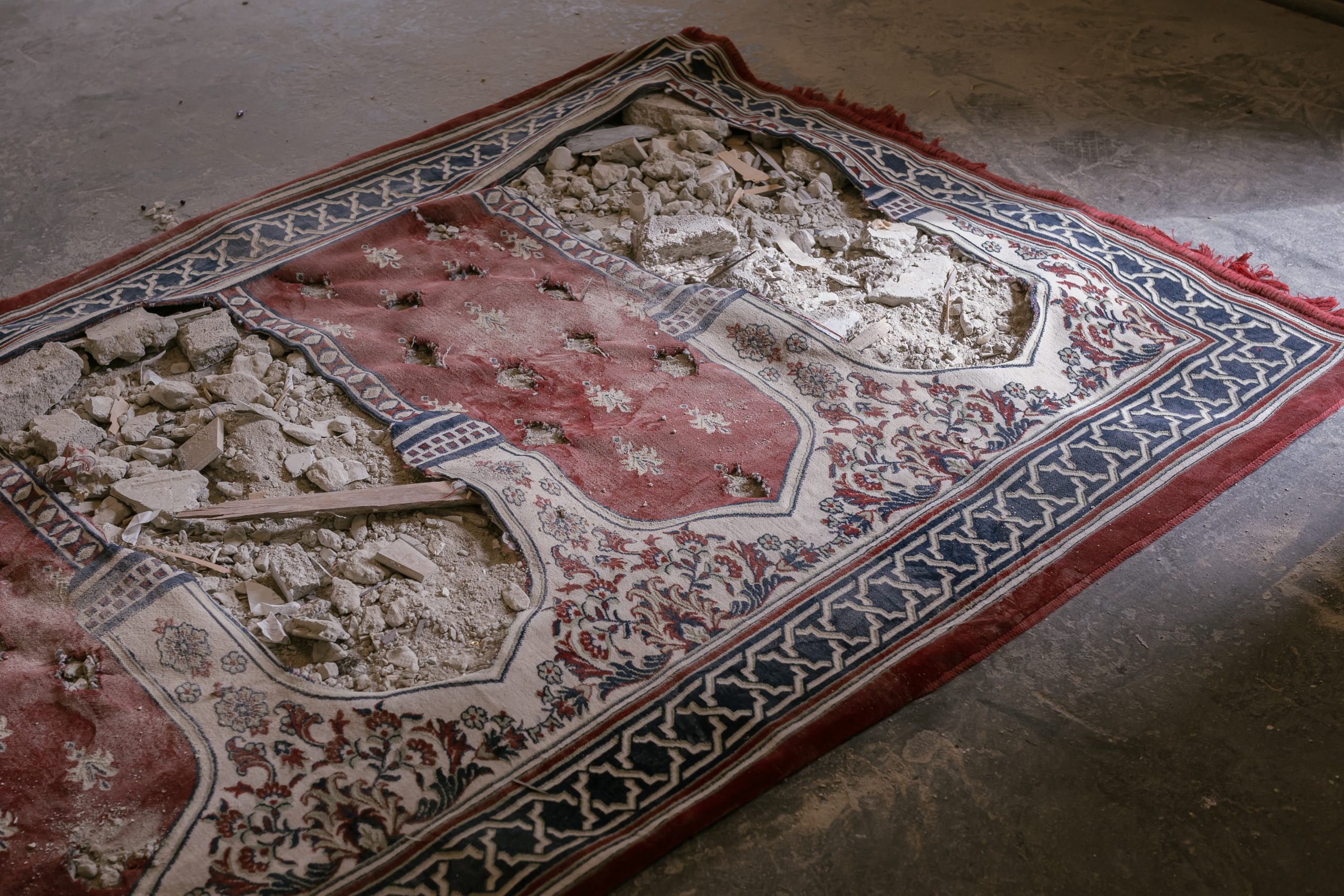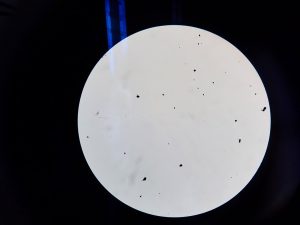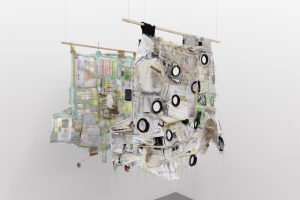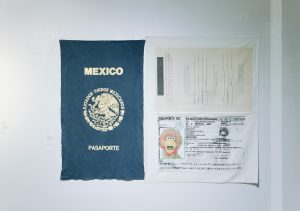Upon entering Comfort Station, visitors walked into a homey environment decorated with an abundance of quotidian objects: monobloc chairs, a cathode-ray tube television, a tape cassette player, rugs, and tables. Upon first glance, the atmosphere seemed to invite visitors to sit down and feel comfortable; however, a closer look revealed some items were fragmented and broken—a lone chair with a missing leg leaning in the corner and cut-up prayer rugs on the floor filled with concrete debris. This juxtaposition of reinvented domestic space and a ruined landscape comprised Sayeda Misa Sourour’s solo exhibition Al-Atlal الأطلال, which translates in English to The Ruins, which ran from May 4–26, 2024.
Sourour is an Egyptian-American artist who works with a wide range of media: sculpture, installation, sound, performance arts, and puppetry. Exploring the material relationship of the interior and exterior Arab domestic spaces, Sourour created an audiovisual and sculptural space at Comfort Station about her living experience in Cairo, Egypt and the struggles of Palestinians in their homeland.
Sourour’s exhibition title, which depicts a sentiment towards the degradation of material over time, refers to the poem “Al-Atlal” by Egyptian poet Ibrahim Nagi (1898–1953). The poem explores nostalgia, memory, grief, and unfulfilled love. The poem gained popularity after Umm Kulthum adapted stanzas from the poem in the early ’60s.
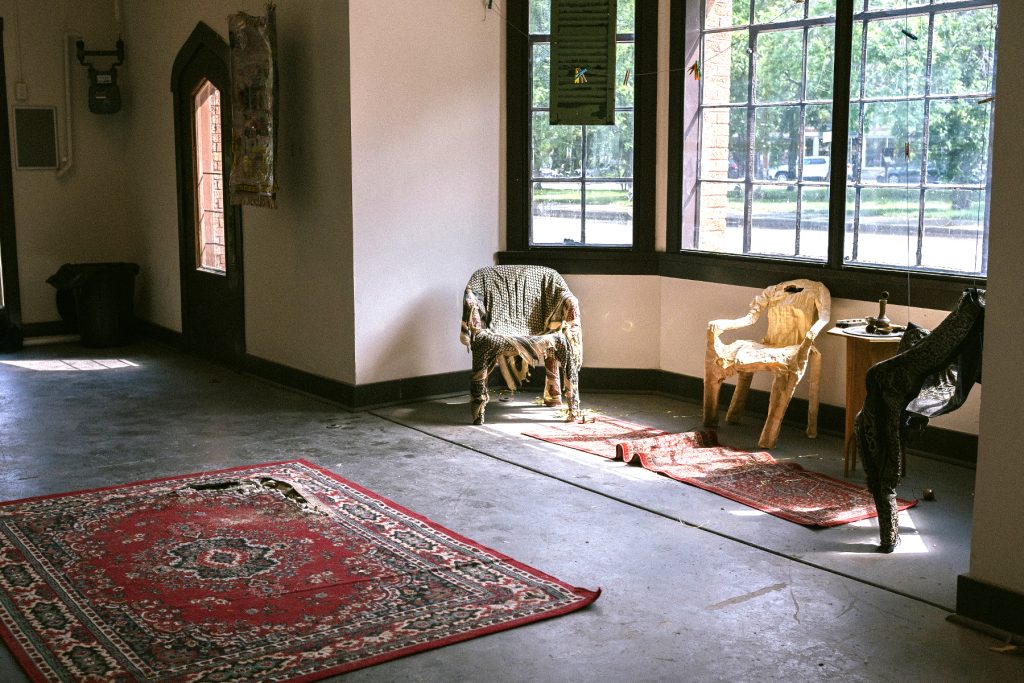
Sourour’s Rug 05: Self Portrait (2023) was the first piece visitors come across upon entering into the reconfigured domestic space. This hanging “rug” showcased a year-worth of packaging neatly attached to a prayer rug. It illustrated products from Egypt: Teas, cigarettes, chickpeas, dates, okra, and pita bread. This absurd mix of consumer products to a faith-related item wittingly reflected the consumerism and lifestyle of an Egyptian American.
Reinforcing the reference to the Egyptian lifestyle, Sourour carved an alternate sonic space with her work Sounds like Home (2023). She repurposed a found cassette tape of Kulthum’s Al-Atlal (1965). Through overdubbing field recordings from Cairo collected in May and June in 2023 onto existing tracks, Sourour interwove temporal dialogues between the past and present. This expanded spacetime extended further with Bahega (2023), a set of cathode-ray tube television playing a VHS of Kulthum’s performance of “Al-Atlal.” Situated at the far right corner, this little shrine, decorated with rugs on top of the table, sat humbly on Sourour’s table to invite viewers into a simulation of an Egyptian living room.
Infusing her carpentry skills into her artmaking, Sourour fabricated a series of monobloc chairs. Monobloc chair is a lightweight and stackable plastic chair that can be mass-produced quickly, sitting comfortably around the world. Sourour, instead of molding it with plastic, crafted her chairs using wood, creating a sense of uniqueness. For Chair 02 (2023) and Chair 03 (2023), she wrapped the chairs with prayer rugs and keffiyeh scarves, and incorporated the keffiyeh to express both Arab pride and solidarity; and by depriving the chairs of their functionality, Sourour transformed chairs into a statue which stands as symbols for resistance and resilience via the actions associated with the use of those chairs, e.g. the actions of sitting, staying, and resting.
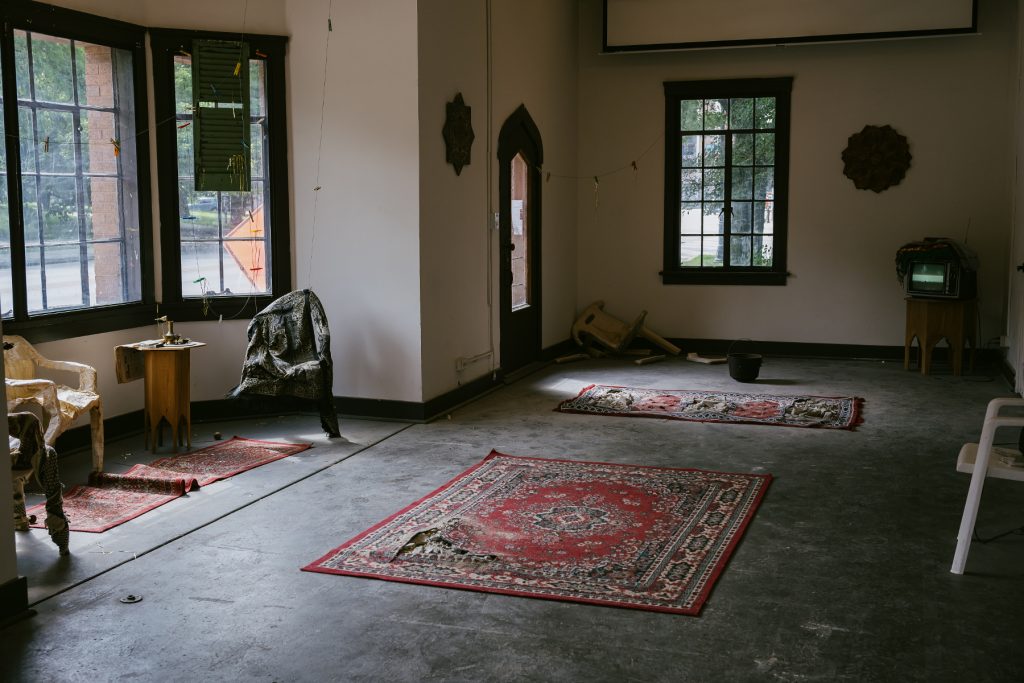
Thinking in response to the ongoing warfare in Palestine, Sourour reflected on the conditions of food insecurity with Rule 53: The use of starvation of the civilian population as a method of warfare is a war crime (2024). On the floor, there was an assemblage consisting of a cast iron pot, grass, and water. This signified the lack of adequate food sources by millions of Palestinians who turned to grass-eating for survival due to starvation. This simple arrangement of found objects highlighted the inhuman and heart-wrecking situation experienced by countless Palestinians.
In proximity was the centerpiece Rug 06—Rule 38: Intentional targeting of religious buildings during conflict is a war crime under international humanitarian law (2024). This work condemned the Israeli force’s effort to destroy over 513 mosques in Gaza as of March 2024. The incised prayer rug became a vessel to hold debris of concrete, clay, limestone, chandelier beads, and subtly, torn Quran pages. The impactful sighting of construction debris in the ripped-opened prayer rug directly visualized how warfare and forceful displacement have been scarring domestic and religious spaces in Palestine.

“Rule 38” and “Rule 53” referred to the international humanitarian law of the same names, which outlaw attacks on cultural properties and the use of forced starvation in warfare. The names condemn how the Israeli military has violently violated human rights. This direct confrontation with military wrongdoing alerted viewers to stay vigilant of the ongoing humanitarian crisis in Palestine. This symbolic and uncanny use of found objects temporarily brought a devastating scene to the viewers into a safe gallery space. This sudden context switch forcibly triggered visitors to contemplate the unexpected fragility of lives.
Witnessing this silent protest was a broken chair, Chair 00 (2023), the first chair in this series that stood quietly at the far left corner. For this piece, Sourour intended to replicate a relatable object in Egypt and the Middle East. She devoted nearly 12 hours per day for a month to create this chair. Compared to the mass-produced plastic version of the monobloc chair, Sourour chose to hand carve the majority of it. That laborious take was conceptually pitted against its cheap plastic counterpart.
Chair 00, and its subtitle, a representation of my mental state in the past four months in a replication of a plastic chair carved out of wood, depicted precisely how this work recorded her mental state on coping with her personal life through the arduous task of carving as she was experiencing the recent crisis in Palestine since October 2023. Upon completion, this introspective work encountered a twisted turn. The chair, despite the time and effort of building, was broken upon transportation. Chair 00 was then having an extra subtitle as Part 2: This is no longer about me.
Chair 00—Part 2: This chair is no longer about me, to Sourour, was a timely reflection on the transient nature of lives as shaped by the humanitarian crisis in Palestine. Sourour associated how Palestinian settlements, once flourished, were destroyed within seconds by brutal military actions—a series of genocides and forced displacement. On a brighter note, this now dysfunctional poplar chair, though barely standing on its remaining legs, evoked an appreciation of impermanence and a resilient way of facing adversity.
By skillfully intermixing ruins and domestic space through repurposed found objects and self-built furniture, Sourour captured the inescapable consequences that come with forced transience. She successfully translated themes of personal loss and collective grief being experienced by those in in the Middle East affected by occupation, genocide, and colonial imperialism into a quest to restore what’s been lost. This posture of resilience invoked a prayer with the sentiment that humanity can rebuild these ruins through faith, resistance, and compassion.
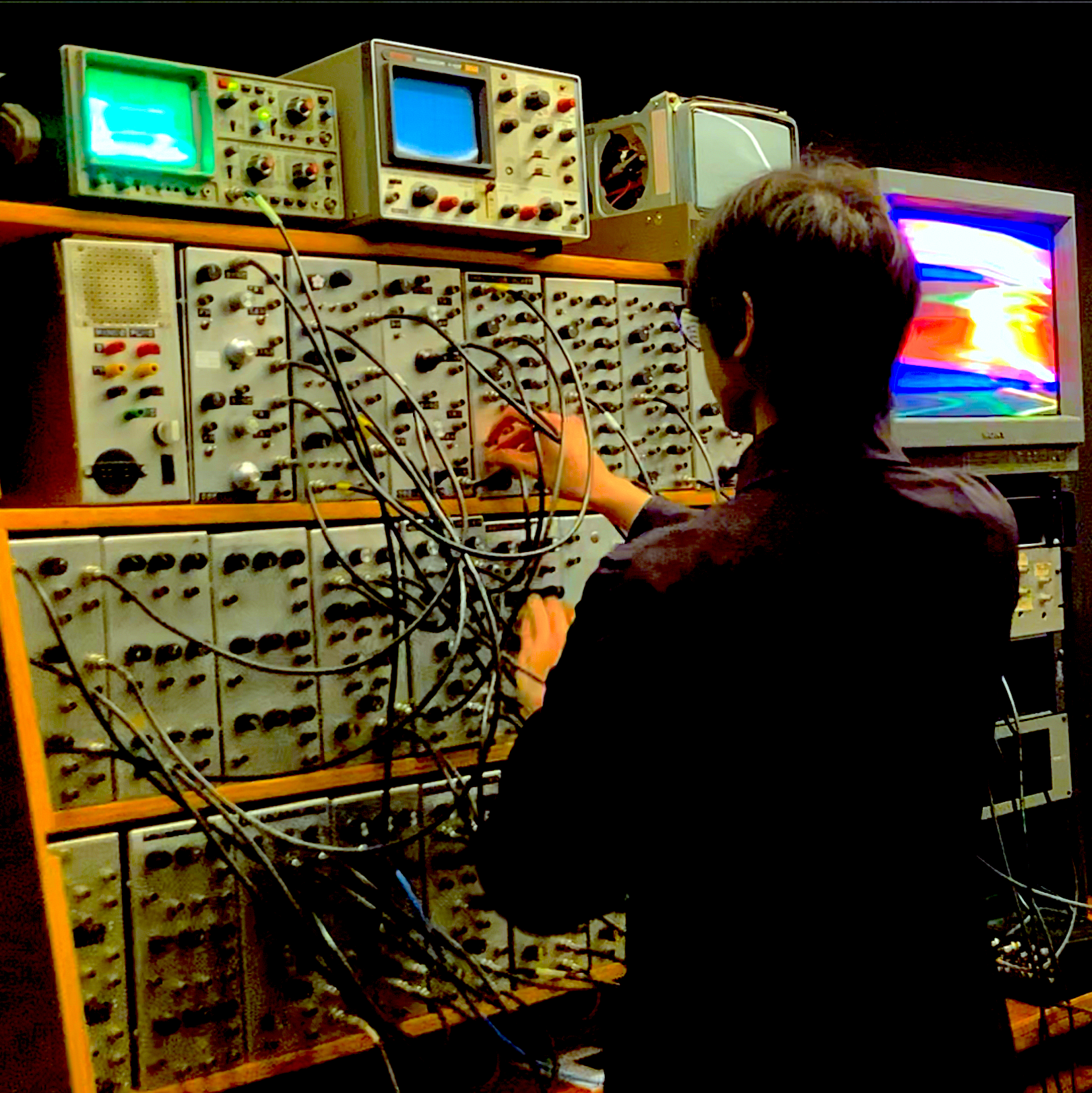
About the author: Gordon Fung (b. 1988, San Francisco, CA; lives in Chicago, IL) is a transdisciplinary artist-curator who works with large-scale curatorial/collaborative practices, experimental audiovisual performances, new media installations, noise music, experimental film/video, media archaeology, participatory works, and happenings. His works highlight unconventional executions like equipment misapplication, lo-fi presentations, and glitches. Such aesthetics confront the viewers’ understanding, perspective, and point of view on reality through a more philosophical and esoteric investigation.
